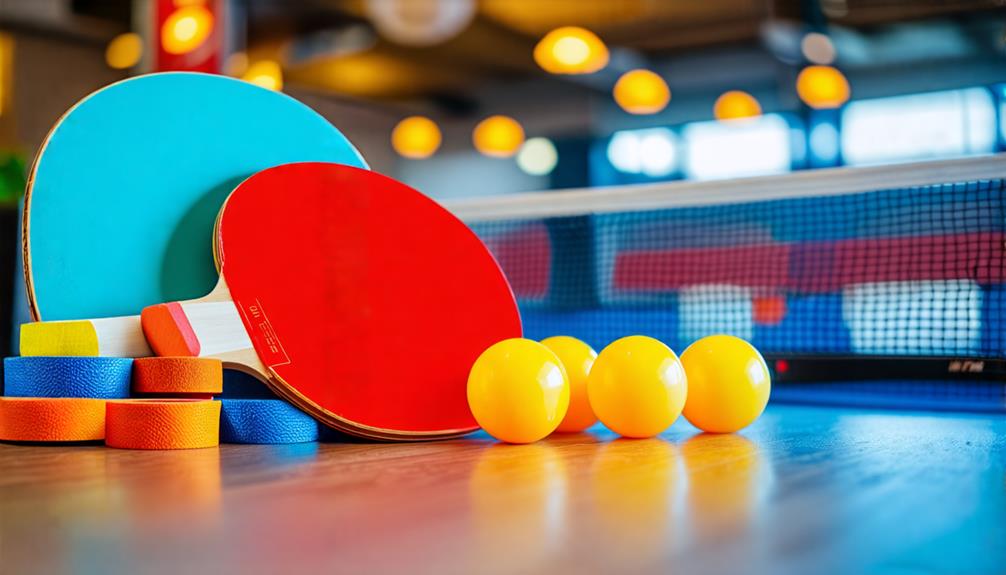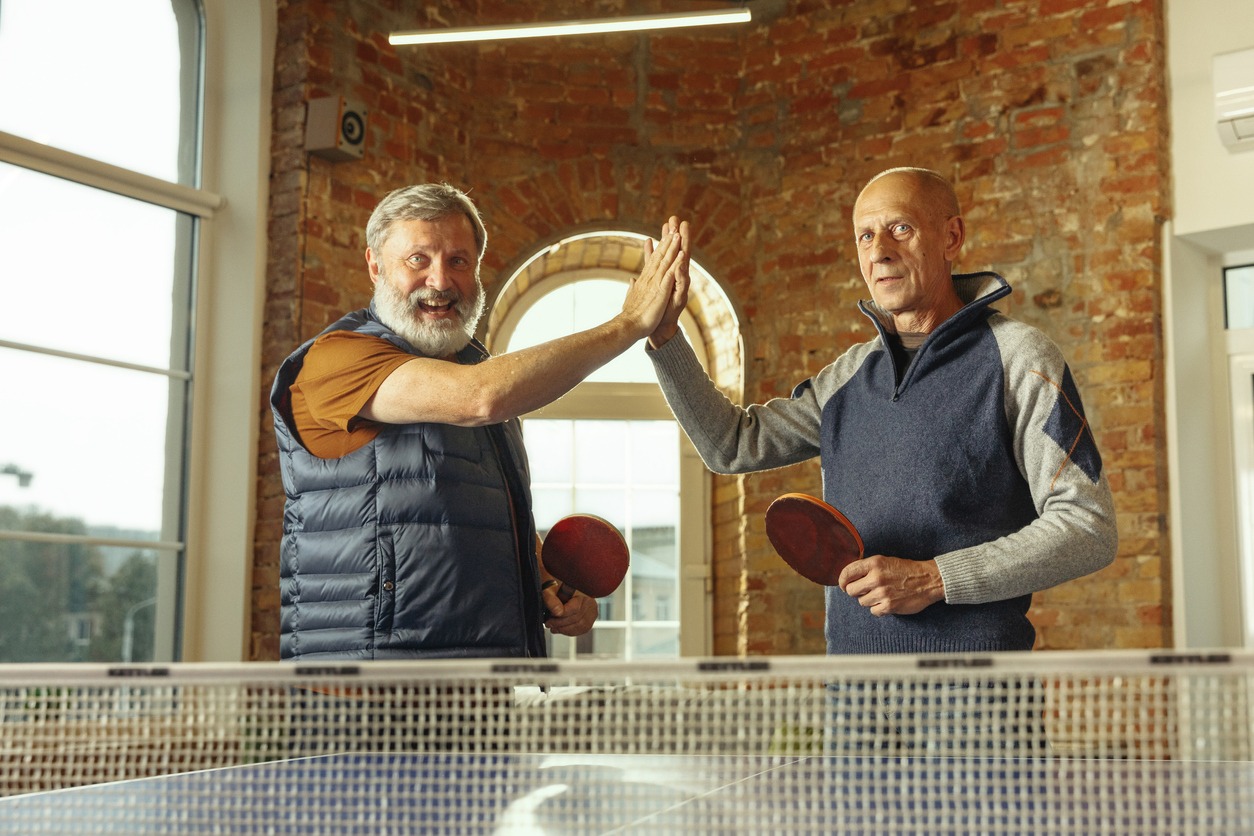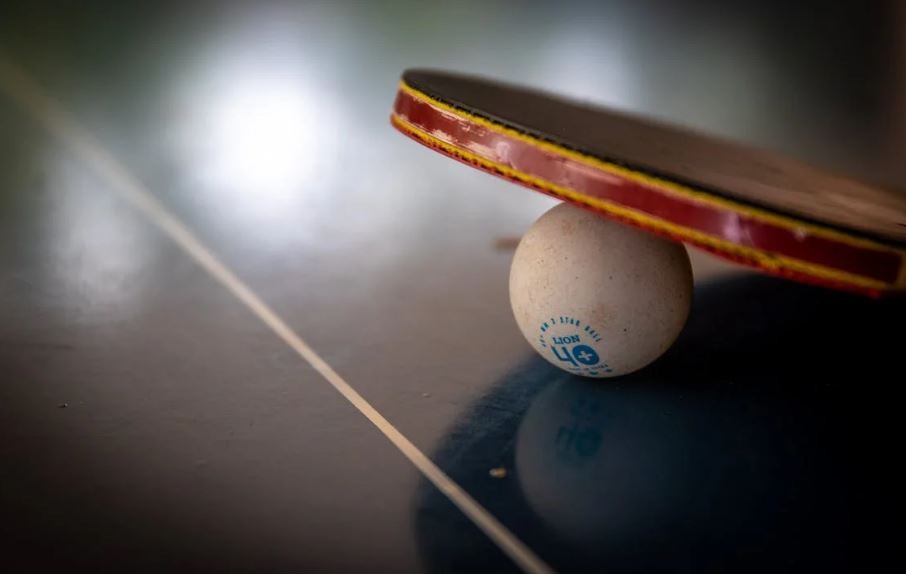What Is the Difference Between Ping Pong and Table Tennis?

You'll find that ping pong and table tennis, often used interchangeably, actually possess distinct differences regarding rules, equipment, and cultural perceptions. Ping pong is seen as more casual, with different serving techniques and scoring systems. The equipment used is also less specialized, often featuring simpler paddles. Table tennis, on the other hand, is governed by the International Table Tennis Federation (ITTF) and is recognized for its competitive nature, requiring specific ball and paddle specifications. Players often perceive table tennis as more serious and skill-demanding. For a deeper understanding of these distinctions, there's plenty more to investigate.
Historical Origins
Table tennis, which you might know as ping pong, has its roots in late 19th century England. The game evolved from early versions like Gossima in the 1890s. The term "ping pong" was initially coined in 1884 by Harry Dacre in a song that mimicked the sound of the ball hitting the table. By 1901, two organizations were established: the Tennis Table Association and the Ping Pong Association. These groups had to merge in 1903 due to trademark issues, unifying the sport's administration.
The International Table Tennis Federation (ITTF) was formed in 1926 to govern the sport globally. This organization was essential in standardizing the rules and equipment, ensuring that table tennis could be played consistently worldwide. The game saw a resurgence in popularity in the UK around 1922, after a period of dormancy, further solidifying its cultural presence.
Understanding these historical origins gives you insight into how the game of table tennis, or ping pong, developed and became organized. From its early days in England to the formation of the ITTF, the sport has evolved considerably, reflecting its enduring appeal and structured growth.
Terminology and Context
When diving into the terminology and context of the sport, you'll quickly notice that "ping pong" and "table tennis" carry distinct connotations. Originating as a trademark in the UK back in 1900, "ping pong" often conjures images of casual, recreational play. On the other hand, "table tennis" is the official term recognized by the International Table Tennis Federation (ITTF) and is used in competitive settings.
Historically, both terms were interchangeable, but as the sport evolved, "table tennis" became standardized for serious gameplay. The ITTF governs the sport, enforcing specific rules like the required ball toss height for serves, making it clear that table tennis is a serious endeavor. This distinction influences how players identify themselves; serious players generally prefer "table tennis" to emphasize the sport's competitive nature, while casual players might opt for "ping pong" to highlight its fun, social aspects.
Culturally, "ping pong" suggests a relaxed, informal atmosphere, whereas "table tennis" is seen as a serious, Olympic-level sport. This difference in terminology affects not just how the game is played but also how it's perceived, shaping the identity and approach of both casual and serious players.
Rule Differences
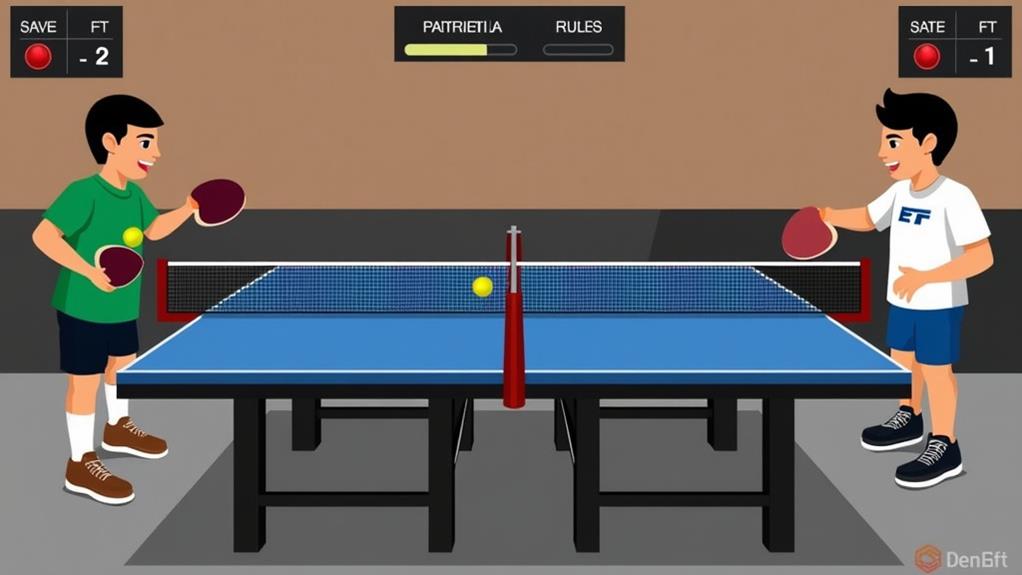
Curious about the rule differences between ping pong and table tennis? Let's explore! One of the key distinctions lies in the serving rules. In table tennis, you must toss the ball at least 16 cm in the air and serve from behind the table's baseline. In contrast, traditional ping pong allows you to serve directly from your hand or after a bounce, offering a more relaxed approach.
Scoring elements also differ between the two sports. Table tennis matches are typically played to 11 points, requiring a two-point lead to win. On the other hand, traditional ping pong matches often use a 21-point format. Moreover, ping pong introduces unique scoring elements like the "double point ball," which each player can use once per serve, adding a strategic twist not found in table tennis.
Another significant rule difference concerns how the ball must bounce. In table tennis, only the serve needs to bounce on both sides of the table. However, in ping pong, every shot must bounce on both sides, emphasizing a different style of play.
- Serving rules: Tossing the ball in table tennis vs. direct serve in ping pong
- Scoring elements: 11-point games in table tennis vs. 21-point in traditional ping pong
- Bounce on both sides: Only on serves in table tennis vs. every shot in ping pong
Understanding these rule differences can help you appreciate the competitive side of each game.
Equipment Specifications
Unlike their similar appearances, the equipment used in ping pong and table tennis has distinct differences that impact gameplay. To begin with, consider the balls: ping pong balls measure 25mm in diameter, while table tennis balls are slightly larger at 27mm. This difference affects how the ball moves and how you need to respond during play.
Next, let's look at the paddles. Ping pong paddles often lack sponge layers, resulting in less spin and control. This makes the game more straightforward and less about finesse. On the other hand, table tennis paddles come with a range of sponge and rubber configurations, enhancing performance by allowing you to generate more spin and better control the ball.
The surfaces of the bats also differ. Ping pong bats typically have sandpaper surfaces, which limit spin. In contrast, table tennis bats utilize rubber and sponge, making them more versatile and capable of producing greater spin.
Additionally, ping pong uses a double point ball that is white, contrasting with the standard orange ball in table tennis competitions. Finally, in ping pong, identical paddles guarantee no equipment advantages, whereas table tennis players can customize their bats to suit their playing styles.
Gameplay Dynamics
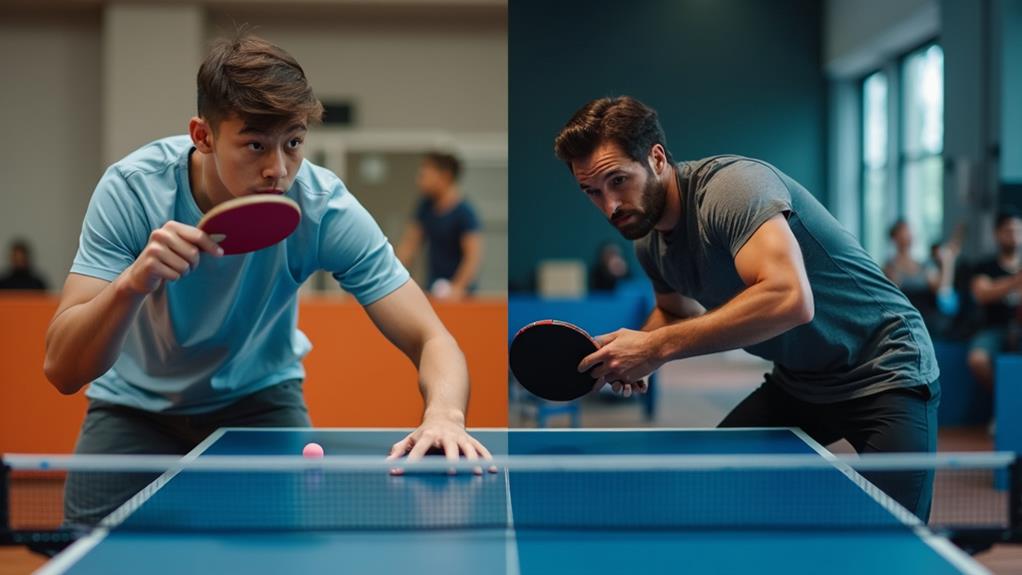
While the equipment sets the stage for each sport, the gameplay dynamics truly define the experience of ping pong and table tennis. In ping pong, the emphasis is on craft and skill rather than sheer power, thanks to the bat design. This promotes a strategic and finesse-oriented style of game, where longer rallies are common. The introduction of a double point ball adds an extra layer of strategy, forcing players to carefully consider their decisions during pivotal moments.
In contrast, table tennis allows for more aggressive play due to specialized paddles that improve spin and power. The rallies here are often shorter but more intense, demanding quick reflexes and precision. Players must adapt their gameplay styles accordingly, with distinct strategies required for the more formal and competitive nature of table tennis.
The scoring systems also vary:
- Ping pong: Often played to 15 or 21 points, allowing for sudden death scenarios.
- Table tennis: Matches are typically played to 11 points with more structured scoring.
- Double point ball: Unique to ping pong, adding complexity to significant game moments.
Understanding these gameplay dynamics can help you appreciate the unique challenges and strategies each sport demands.
Olympic History
Table tennis made its grand debut at the Olympic Games during the 1988 Seoul Olympics, signifying its acceptance as a top-tier competitive sport. That year, the game saw participation from 159 nations, highlighting the sport's global reach and appeal. The introduction of table tennis to the Olympics marked the beginning of a new chapter where players showcased remarkable athleticism and quick reflexes on an international stage.
In the early years of Olympic competition, players like Deng Yaping emerged as icons. Deng won four Olympic gold medals in 1992 and 1996, elevating the sport's profile and inspiring future generations. The level of competition in table tennis is intense, with matches often characterized by high skill levels and rapid exchanges.
China's dominance in the sport is undeniable, especially with stars like Ma Long. Ma secured singles gold medals in both the 2016 and 2020 Olympics, reinforcing China's stronghold in table tennis. The Olympic games have continually showcased top-tier players who bring excitement and prestige to the sport, making it a prominent event in the Olympic program. Each competition pushes the boundaries of what's possible, thrilling fans worldwide.
Cultural Perceptions

Cultural perceptions of ping pong and table tennis reveal distinct attitudes toward each variation of the game. In many places, ping pong is seen as a casual game, perfect for social gatherings and family fun. You might think of it as a light-hearted activity, ideal for picnics or basement rec rooms. On the other hand, table tennis is viewed as a serious competitive sport, especially given its status as an Olympic event.
Key Points:
- Casual Game vs. Competitive Sport: Ping pong typically evokes a relaxed, social atmosphere, while table tennis signifies dedication and high-level skill.
- Cultural Differences: In China, "ping pong" is the official name, reflecting its widespread appeal across all skill levels. In contrast, "table tennis" is often used in formal, competitive contexts globally.
- Perceptions of Physical Demands: Many people underestimate the physical requirements of table tennis, not realizing that professional athletes train intensely to compete at the highest levels.
Interestingly, events like the World Championship of Ping Pong are bridging these perceptions. With growing recognition, ping pong is increasingly seen as a legitimate competitive format, blurring the lines between casual play and serious sport.
